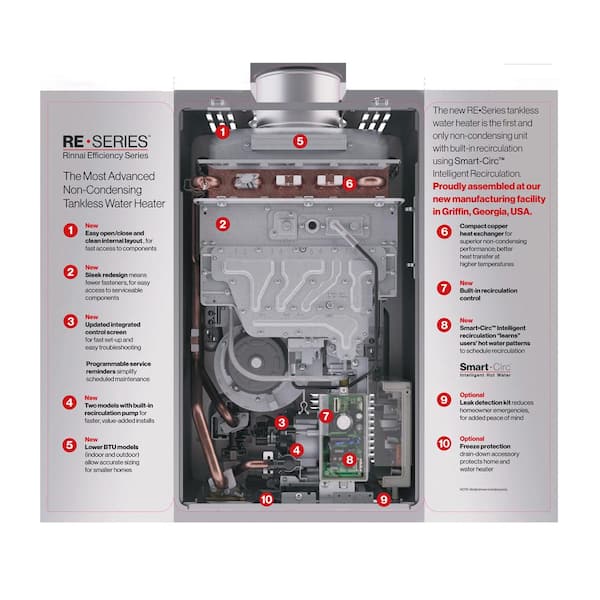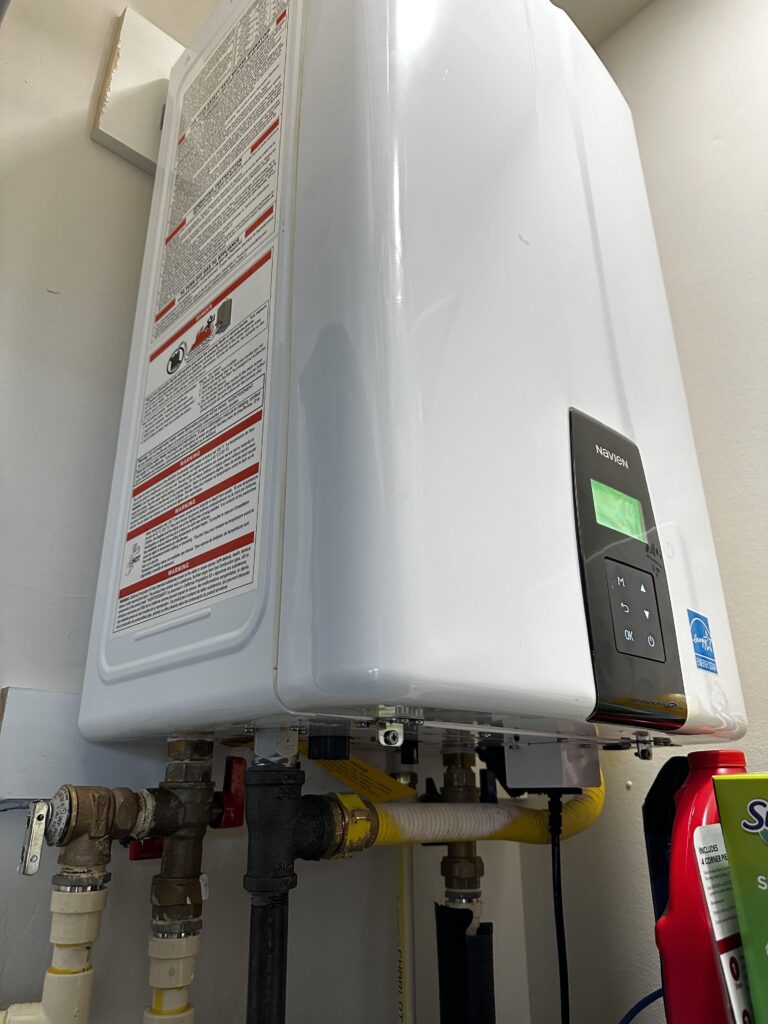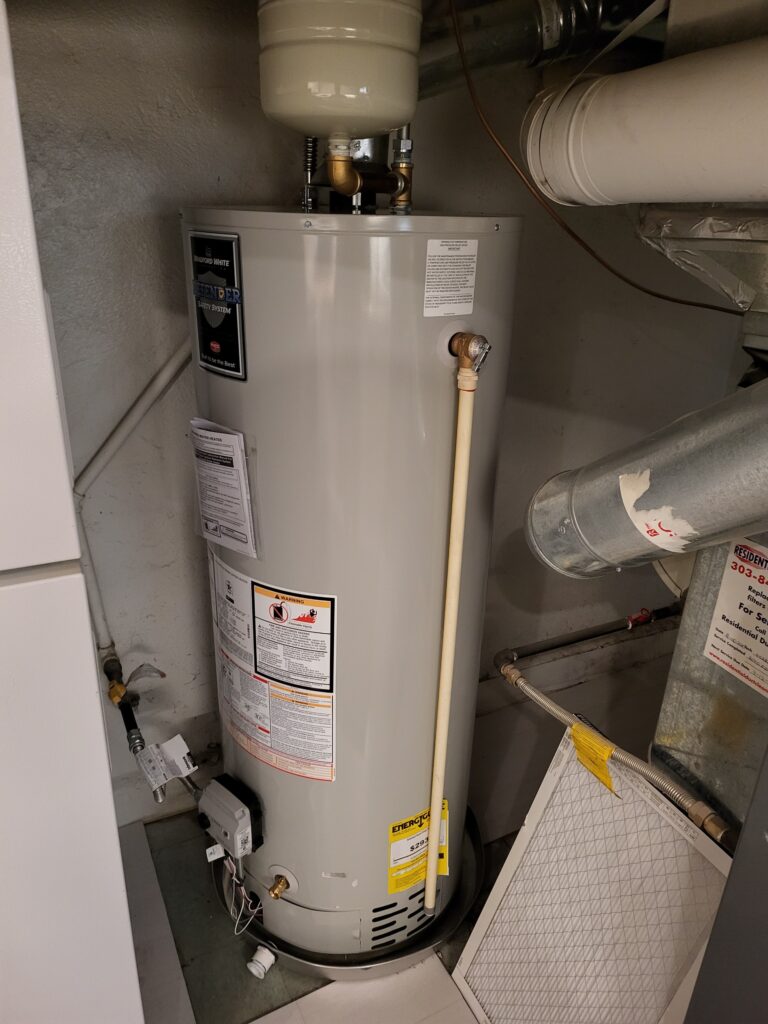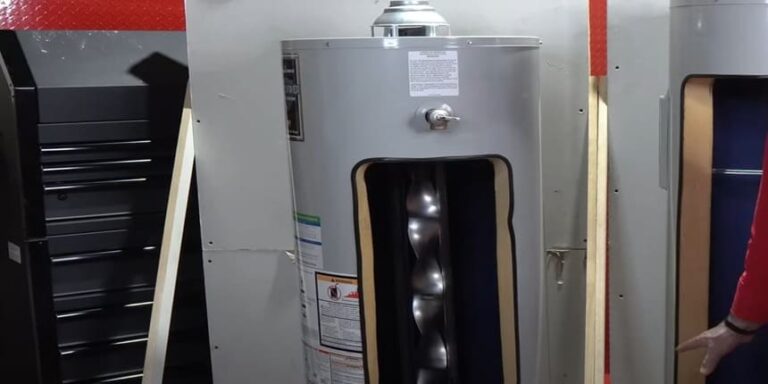Are you tired of stepping into the shower, only to feel a disappointing trickle of water? You’re not alone.
Many homeowners face the frustrating issue of low water flow with their Rinnai tankless water heaters. It’s a common problem, but one that can disrupt your daily routine and leave you longing for a more satisfying solution. Imagine having a consistent, powerful stream of hot water at your fingertips every time you turn on the tap.
Sounds ideal, right? We’ll uncover the reasons behind this low flow issue and guide you through practical solutions to restore your water heater’s performance. Stick with us, and you’ll soon enjoy the full benefits of your Rinnai system.
Rinnai Tankless Water Heater Basics
Are you frustrated with the low flow issue in your Rinnai Tankless Water Heater? Understanding the basics can help you tackle this problem effectively. Let’s dive into the fundamentals of Rinnai tankless water heaters and see how they operate to provide you with endless hot water, while saving energy and space.
How Tankless Systems Work
Tankless water heaters, like those from Rinnai, heat water directly without storing it in a tank. When you turn on the hot water tap, cold water travels through a pipe into the unit.
The water is heated by a gas burner or electric element, providing you with a continuous supply of hot water. This means you never run out of hot water as long as the heater is operating efficiently.
However, low flow issues can occur if there’s a blockage or the heating elements are not functioning properly. Regular maintenance is key to preventing these problems.
Key Features Of Rinnai Models
Rinnai models are known for their reliability and advanced technology. They offer features like precise temperature control, ensuring your shower is always the perfect temperature.
These models also boast energy efficiency, reducing your utility bills while being environmentally friendly. Some models even have Wi-Fi connectivity, allowing you to monitor and control your heater remotely.
Rinnai’s compact design saves space, making them ideal for smaller homes or apartments. This can be a game changer if you’re looking to optimize space without sacrificing comfort.
Have you considered how a tankless system could fit into your home? The benefits might surprise you. Could it be time to switch to a more efficient solution for your hot water needs?

Credit: www.nachi.org
Identifying Low Flow Issues
Experiencing low flow issues with a Rinnai tankless water heater? This common problem can disrupt your hot water supply. Cleaning the water filter and checking for blockages often resolve the issue, ensuring consistent water flow.
Dealing with low flow issues in your Rinnai tankless water heater can be frustrating. You expect a steady stream of hot water, but instead, you get a trickle. Understanding the signs and causes of low flow problems can help you solve them quickly. Let’s dive into how you can identify and address these issues effectively.Signs Of Low Flow Problems
Spotting low flow issues early can save you time and stress. You may notice your shower or faucets have reduced water pressure. Perhaps your hot water takes longer to reach the desired temperature. Sometimes, the water might alternate between hot and cold, disrupting your morning routine. Do your appliances struggle to fill with water? This is another sign that your tankless heater isn’t performing well. Pay attention to these clues—they’re your water heater’s way of signaling for help.Common Causes Of Low Flow
Low flow problems often stem from blockages or build-up within the system. Mineral deposits, especially in hard water areas, can clog the pipes. Regular maintenance can prevent these build-ups from becoming a major issue. Another cause could be a faulty flow sensor. This part ensures the right amount of water flows through the system. If it’s malfunctioning, your water heater might not perform as expected. Sometimes, the problem lies outside your water heater. Check your home’s water pressure. If it’s too low, it might affect the performance of your tankless system. Have you checked the inlet filter recently? A dirty filter can also restrict water flow. Addressing these issues doesn’t have to be daunting. With the right information and a bit of effort, you can enjoy uninterrupted hot water again. Have you ever faced low flow issues? How did you tackle them? Share your thoughts in the comments below.Troubleshooting Techniques
Rinnai tankless water heaters can sometimes face low flow issues. Troubleshooting these problems helps restore efficiency. Understanding how to fix these issues is important. It ensures consistent hot water supply. Here, we cover essential techniques.
Checking Water Supply
First, examine the water supply. Make sure the main water valve is open. A partially closed valve can cause low flow. Look for any leaks in the system. Even small leaks can reduce water pressure. Confirm that the water pressure is adequate. A pressure gauge can help measure this.
Inspecting Filters And Valves
Next, inspect filters and valves. Clogged filters can restrict water flow. Remove and clean these filters regularly. Check the inlet valve for obstructions. Sometimes debris can block this valve. Ensure the valves are fully open.
Evaluating Temperature Settings
Finally, evaluate the temperature settings. Sometimes, incorrect settings can affect flow. Ensure the thermostat is set correctly. Refer to the user manual for guidance. Overheating may cause the heater to reduce flow. Adjust the settings as needed.
Maintenance Tips
Experiencing low water flow in your Rinnai tankless heater? Regularly clean the inlet filter to prevent clogs. Check for any debris in the water lines. Ensuring these components are clear can help maintain optimal water flow.
Keeping your Rinnai tankless water heater in top condition can prevent the common issue of low flow. With a few maintenance tips, you can enjoy a steady stream of hot water without any interruptions. Here are some practical insights to help you maintain your water heater effectively.Regular Cleaning Procedures
Regular cleaning is crucial for the optimal performance of your tankless water heater. Have you ever noticed a drop in water flow right before a big family gathering? It’s frustrating, isn’t it? This can often be due to mineral build-up in your heater. To prevent this, flush the system every 6-12 months. Use a descaling solution to remove any mineral deposits. This helps in maintaining a consistent water flow and extends the life of your unit. Always refer to the manual for specific cleaning instructions tailored to your model.Preventive Measures
Apart from regular cleaning, there are preventive measures you can take to avoid low flow issues. Installing a water softener can be a game-changer, especially if your home has hard water. Hard water leads to more mineral build-up, which can clog the water passages in your heater. Additionally, check the water inlet filter regularly. A clogged filter can cause reduced water flow. Clean or replace it as needed to ensure a smooth operation. Have you checked the temperature settings? Too high a setting can cause scaling faster. Set your heater to an optimal temperature, usually around 120 degrees Fahrenheit, to minimize mineral build-up. By following these maintenance tips, you can keep your Rinnai tankless water heater running smoothly. What steps are you planning to take today to ensure a consistent flow of hot water in your home?When To Seek Professional Help
Experiencing issues with your Rinnai tankless water heater can be stressful. Knowing when to seek professional help is crucial. Some problems may be simple to fix. Others require expert attention. This section guides you on recognizing these situations.
Indicators For Expert Assistance
Water heater shows frequent low flow issues. This may signal deeper problems. Experiencing inconsistent water temperatures can be frustrating. Unusual noises from the unit often indicate mechanical issues. Regular maintenance fails to resolve these issues. These signs suggest it is time to call a technician.
Choosing The Right Technician
Finding a skilled technician ensures effective problem-solving. Check their certifications and experience with Rinnai products. Look for positive reviews from previous customers. Compare service costs to avoid overpaying. Ensure they offer a warranty on repairs. This guarantees peace of mind and quality service.

Credit: www.youtube.com
Enhancing Water Heater Performance
Rinnai tankless water heaters are efficient but can face low flow issues. Improving performance ensures a steady hot water supply. It’s important to address these concerns for optimal functionality.
Upgrading System Components
Replacing old parts can improve water flow. Consider installing a new flow sensor. It helps in detecting water volume accurately. Check the heater’s filter for any blockages. Clean or replace it if needed. A clean filter improves water movement. Use high-quality replacement parts. They last longer and enhance performance.
Improving Home Plumbing
Old pipes can restrict water flow. Consider upgrading to wider pipes. They allow more water to pass through. Check for leaks in the plumbing system. Fixing leaks can improve water pressure. Ensure all valves are fully open. Partially closed valves hinder water flow. Regular maintenance can prevent future plumbing issues.

Credit: www.homedepot.com
Frequently Asked Questions
What Causes Low Flow In Rinnai Tankless Heaters?
Low water flow in Rinnai tankless water heaters can be caused by mineral buildup, clogged filters, or incorrect settings. Regular maintenance, including cleaning the inlet filter and descaling, can help prevent this issue. Always ensure that the unit’s settings match your household’s water pressure requirements.
How Can I Fix Low Flow Issues?
To fix low flow issues, clean or replace clogged filters and descale the unit. Check and adjust the water pressure settings if necessary. Regular maintenance is key to preventing low flow problems and ensuring optimal performance of your Rinnai tankless water heater.
Why Is My Water Heater Not Producing Enough Hot Water?
If your Rinnai water heater isn’t producing enough hot water, check for clogged filters or mineral buildup. Ensure the temperature setting is appropriate for your needs. Regular maintenance, such as cleaning and descaling, can help maintain consistent hot water flow.
Can Cold Weather Affect Water Flow?
Yes, cold weather can affect the water flow in tankless heaters. Cold temperatures can thicken pipes, reduce flow, and affect performance. Insulating pipes and maintaining your heater can prevent cold weather issues and ensure a steady water flow throughout the year.
Conclusion
Solving low flow issues with Rinnai tankless water heaters can be simple. Regular maintenance helps prevent these problems. Checking filters and valves can make a difference. Sometimes, professional help is needed for complex issues. This ensures your heater runs efficiently.
Proper care extends its lifespan. And saves energy. A well-functioning water heater provides comfort. No more cold showers. Keep your heater in top shape. Enjoy consistent hot water. Every day. Investing time in maintenance pays off. For a reliable, trouble-free experience, stay proactive.
Your home deserves it.



